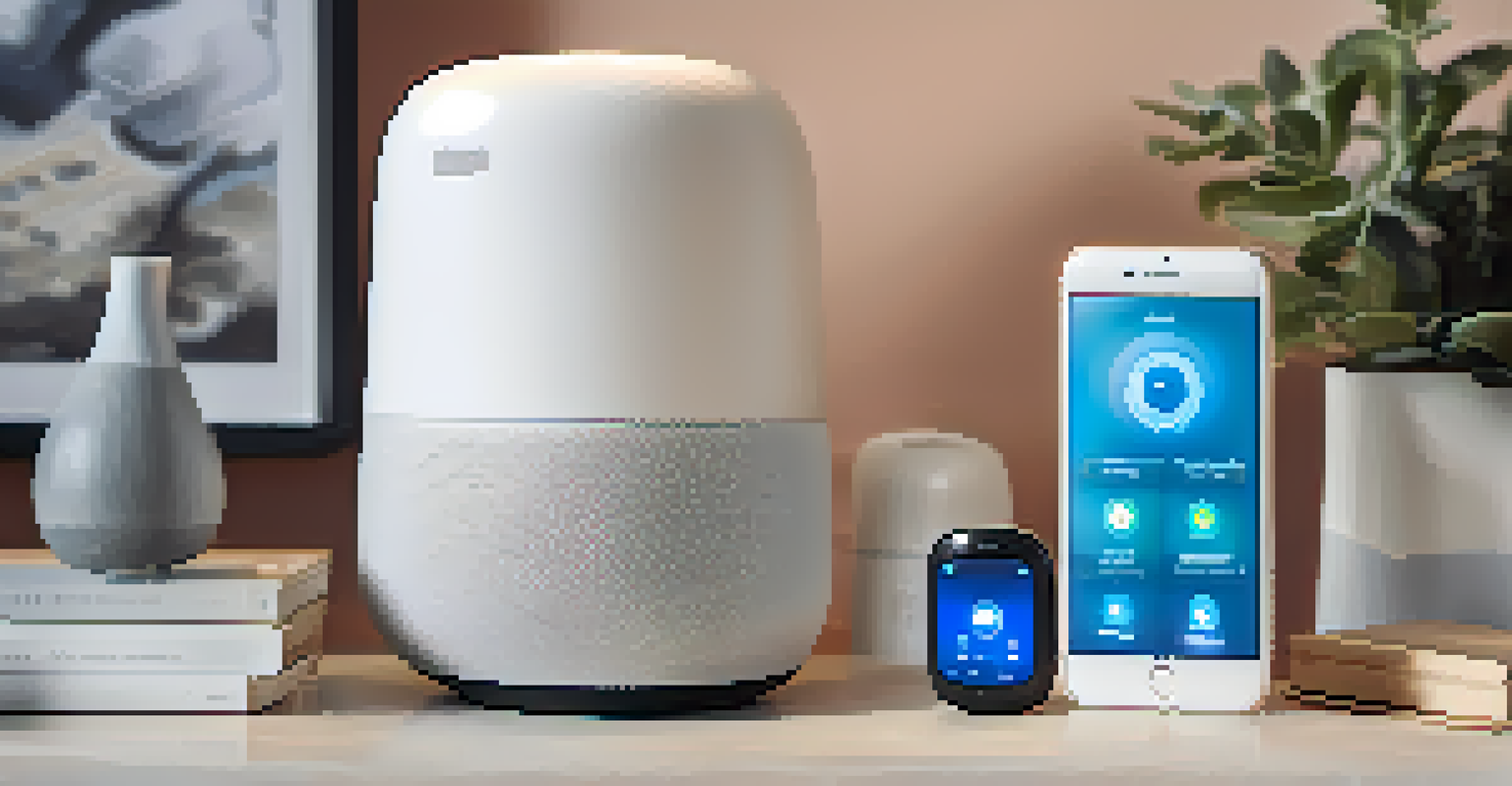The Rise of Smart Home Technology: What You Need to Know

Understanding Smart Home Technology and Its Components
Smart home technology refers to devices and systems that automate tasks in our homes, making our lives easier and more efficient. This includes everything from smart speakers and lighting to thermostats and security systems. Essentially, these technologies connect to the internet and can be controlled remotely, often through a smartphone app.
The future is already here — it's just not very evenly distributed.
Imagine walking into your home and having the lights turn on automatically or adjusting the thermostat without lifting a finger. That's the convenience smart home technology brings, allowing you to create a tailored living environment. These devices can communicate with each other, forming an integrated system that enhances the overall user experience.
As we delve deeper into this topic, you'll see how these innovations not only add comfort but also contribute to energy savings and improved security. Understanding the basic components sets the stage for appreciating the broader impact of smart home technology.
The Growth of Smart Home Technology Market
In recent years, the smart home market has witnessed explosive growth, driven by advancements in technology and increasing consumer interest. According to industry reports, this market is expected to reach hundreds of billions of dollars in the coming years. This surge reflects a shift in consumer behavior, with more people embracing technology that simplifies their daily routines.

One of the key factors fueling this growth is the rise of affordable smart devices. As technology becomes more accessible, homeowners are more inclined to invest in these solutions. For instance, many consumers start with a smart speaker and gradually expand their smart home ecosystem, discovering the benefits one device at a time.
Smart Homes Enhance Daily Life
Smart home technology automates tasks and improves efficiency, offering convenience and comfort in our living spaces.
Moreover, the COVID-19 pandemic has accelerated this trend, leading to a heightened interest in home automation as people spend more time at home. With the convenience and security that smart devices offer, it's no wonder this market continues to thrive.
Key Benefits of Adopting Smart Home Technology
One of the most significant benefits of smart home technology is the convenience it offers. Imagine controlling your lights, thermostat, and even your coffee maker from your smartphone, no matter where you are. This level of control not only saves time but also enhances your comfort by allowing you to set your home just the way you like it.
Technology is best when it brings people together.
Energy efficiency is another major advantage. Smart thermostats, for example, learn your schedule and adjust heating and cooling accordingly, which can lead to substantial savings on energy bills. By optimizing energy usage, homeowners can reduce their carbon footprint while enjoying a more sustainable lifestyle.
Lastly, security is a critical component of smart home technology. Smart cameras and doorbells provide real-time alerts and video feeds, allowing you to monitor your home from anywhere. This peace of mind is invaluable, especially for those who travel frequently or have busy lives.
Challenges and Concerns with Smart Home Devices
While the benefits of smart home technology are appealing, there are also challenges and concerns that potential users should consider. One major issue is cybersecurity; as devices connect to the internet, they can become vulnerable to hacking. Ensuring your devices are secure with strong passwords and regular updates is essential.
Another concern is interoperability among different devices and platforms. Not all smart devices communicate seamlessly with each other, which can create a frustrating experience for users. It's crucial to choose products that are compatible with one another or work within the same ecosystem, such as Google Home or Amazon Alexa.
Market Growth Driven by Demand
The smart home market is expanding rapidly due to consumer interest and the affordability of smart devices.
Lastly, there's the question of privacy. Many smart devices collect data about your habits and preferences, which can raise concerns about how that information is used. Being informed and choosing reputable brands can help mitigate these worries.
Popular Smart Home Devices to Consider
If you're looking to dive into the world of smart home technology, there are several popular devices that can serve as a great starting point. Smart speakers, like the Amazon Echo or Google Nest, are perfect for controlling other devices and providing hands-free assistance. They can play music, answer questions, and even manage your calendar.
Smart lighting systems, such as Philips Hue, allow you to customize your home's ambiance with millions of color options and scheduling features. Imagine being able to set the mood for a dinner party or gradually brightening your lights in the morning to wake up gently.
Lastly, consider investing in a smart security system, like Ring or Arlo. These systems provide peace of mind with real-time alerts and remote monitoring, ensuring that your home is safe whether you're inside or away.
How to Get Started with Smart Home Technology
Getting started with smart home technology doesn't have to be overwhelming. A good first step is to identify which areas of your home you'd like to automate. Think about your daily routines and where technology could make life easier – whether it's improving security, energy efficiency, or convenience.
Next, start small. Choose one or two devices that fit your needs and budget. For example, a smart speaker can serve as a hub for controlling other devices, making it an excellent entry point. Once you're comfortable, you can gradually expand your smart home ecosystem by adding additional devices.
Benefits vs. Security Challenges
While smart home devices offer benefits like energy savings and security, they also present challenges such as cybersecurity and privacy concerns.
Lastly, research and read reviews to find the best products for your specific situation. Look for devices that are user-friendly and have good customer support. This way, you can ensure a smooth transition into the world of smart home technology.
The Future of Smart Home Technology
As technology continues to advance, the future of smart home technology looks promising. We can expect even more sophisticated devices that learn from our habits and preferences, creating a highly personalized living experience. Imagine a home that anticipates your needs before you even have to ask.
Moreover, advancements in artificial intelligence (AI) and machine learning will likely enhance the capabilities of smart home devices. These technologies can enable devices to communicate more effectively and learn from user interactions, making them more intuitive and efficient over time.

Lastly, sustainability will play a crucial role in the future of smart homes. With a growing emphasis on eco-friendly practices, smart home technology will likely focus on energy-saving solutions and integrating renewable energy sources. This shift not only benefits the environment but also aligns with the increasing consumer demand for sustainable living.